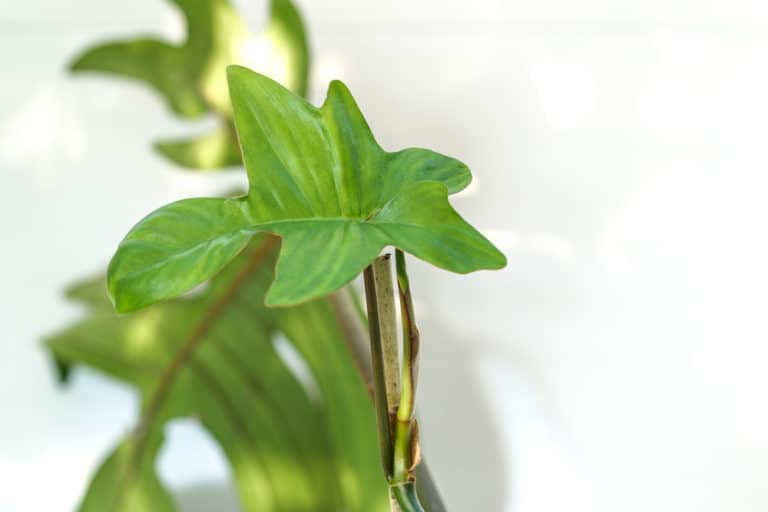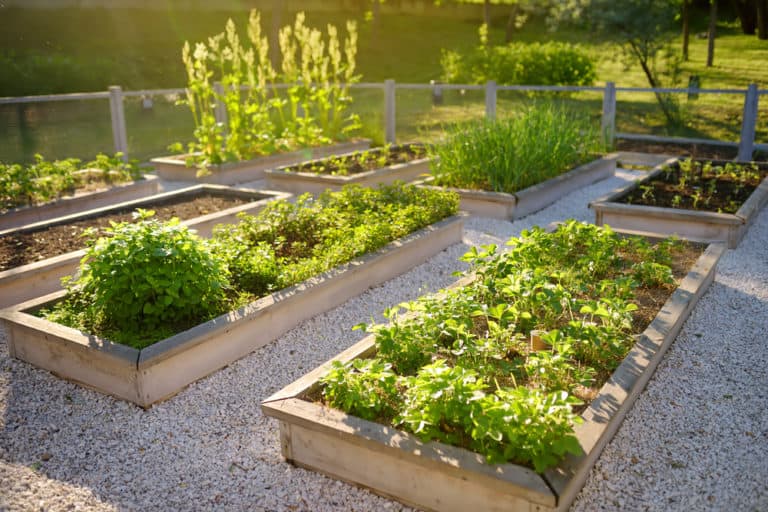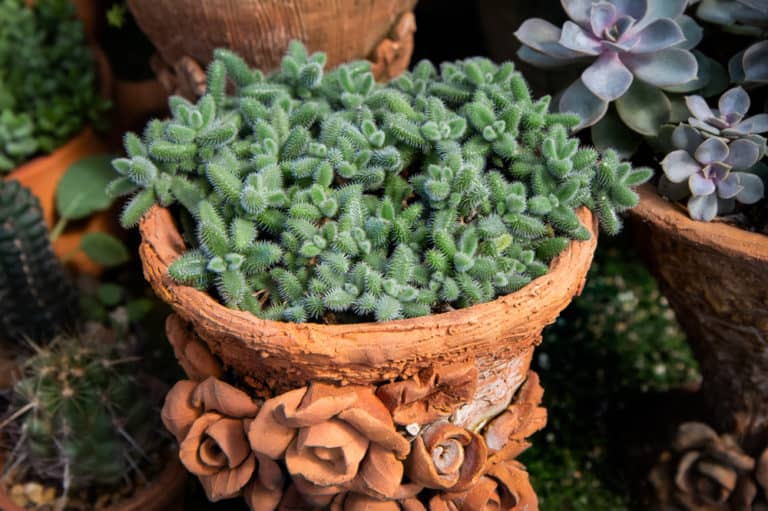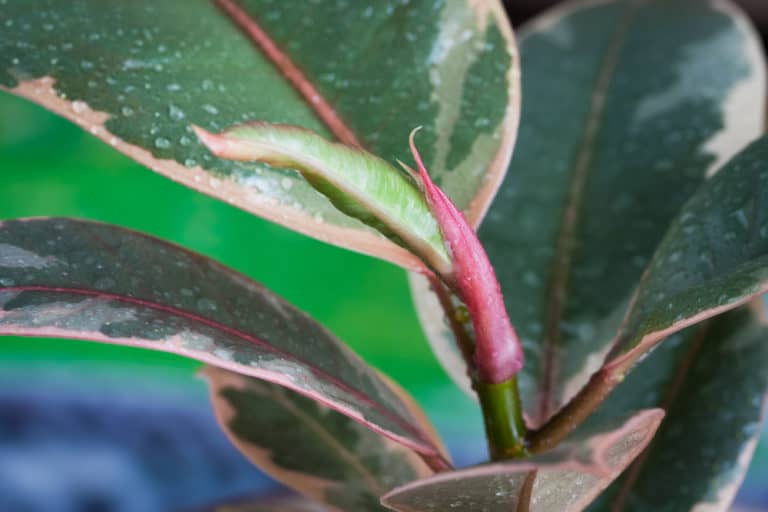Peperomia Ferreyrae ‘Pincushion Peperomia’ Care Guide (2024)

Peperomia ferreyrae is a unique species of Peperomia that is notable for its bean-shaped leaves. It’s a small succulent plant that’s not hard to care for because of its drought-tolerant nature. A perfect element for dish gardens, or potted for window sills and tabletops, pincushion peperomia is great for indoor settings.
| Scientific Name | Peperomia ferreyrae |
| Common Name | Pincushion Peperomia, Bean Plant |
| Light | Bright light, little or no direct sun |
| Watering | Less watering; once or twice a week |
| Temperature | 18°C to 24°C (65 to 86°F) |
| Hardiness Zone | 9, 10 |
| Humidity | Medium to high humidity, 50% or more |
| Soil Type | A peat-based soil is best used that drains well |
| Soil pH | Ranging from 5-7 (acidic to neutral) |
| Fertilizing | Light spray of diluted liquid fertilizer once every two weeks during the springtime |
| Repotting | Repot only when the plant has outgrown its current pot and only to the next size up. |
| Pruning | Pinch out stem tips when the plant is overgrowing to keep it in shape. |
| Propagation | Taking leaf cuttings is the most common method of propagation. |
| Toxicity | Toxic-free plant |
| Mature Size | 15 – 20 cm tall, 10 – 25 cm spread |
| Bloom Time | Summer and autumn |
What’s Unique About Peperomia ferreyrae?
Native to Peru and the rain forests of South America, Peperomia ferreyrae plant has a beautiful foliage shape as each leaf looks like beans. Those fleshy leaves serve a purpose. As with most succulents, it serves as a reservoir for water so the plant won’t get dehydrated even without frequent watering.
Even as a slow grower, this happy bean succulent can have the shape of a low bush. Hence, you can grow it as a small succulent bonsai tree through proper pruning. You can place it to complement your existing succulent collection and create variety by adding that gorgeous foliage.
Peperomia ferreyrae Care
Peperomia ferreyrae plant care isn’t rocket science. This one’s particularly easy to tend to. If it’s your first time having a succulent, you’re choosing the right plant. Just provide a temperature not lower than 10oC (50oF), a well-draining potting mix, and not too much water. Your pincushion peperomia care will surely be at ease.
Light
For better growth, you must meet all the Peperomia ferreyrae light requirements. Aim for bright light most of the time but ensure that it’s not directly hitting your succulent. Full sun is also acceptable but only for only about 2 hours. Intense and direct light isn’t recommended.
Pincushion peperomia light needs to fall between medium to bright intensities. For indoor plants with this requirement, 250 to 1,000 foot-candles are most suitable. In times of low light level, the provision of supplementary light is advised. You may add fluorescent tubes to your room.
For the best location, place it near east-facing or south-facing windows.
Watering
The watering needs of most succulents like Pincushion peperomia are pretty simple. It has a natural mechanism to retain water in its leaves and stems. Hence, it can live normally even during moderate drought conditions.
As a rule of thumb, water the happy bean plant only when the top 2 inches of the soil is dry. The frequency may vary depending on the prevailing season. If it’s summer once or twice a week watering will do. If winter, once a month watering will suffice.
The proper technique of Peperomia ferreyrae watering is the soak and dry method. Soak the soil through deep watering. Then, allow it to dry before watering again.
Temperature
The best temperature for pincushion peperomia lies between 65° to 75°F (18° – 24°C). As it originates from a tropical country, it loves a warm environment. It’s also crucial to note that this succulent’s temperature tolerance is limited. In fact, it is not winter hardy.
Temperatures that go below 10oC (50oF) can be detrimental. So, make sure to protect your plant by providing additional insulation.
Try your best to provide the Peperomia ferreyrae temperature range at all times. This will save you serious troubles in growing your plant. US Hardiness 9 and 10 are the best climate types for growing Peperomia ferreyrae.
Humidity 100
The Peperomia ferreyrae humidity requirements are different from other succulent species. Instead of dry air, it loves relatively high humidity. Maintain at least 50% of humidity level and your happy bean will be happy.
Lack of humidity and dry air may cause a lack of vigor and wilt of your peperomia. Please make a conscious effort to provide extra air moisture. You can use your humidifiers, pebble trays, or manual misting 2 to 3 times a week. Also, avoid placing your plant near air conditions or heaters.
Remember that maintaining the ideal humidity for the happy bean plant is one way to keep it healthy.
Soil
To achieve the best Peperomia ferreyrae soil mixture, use peat-based and well-aerated soil that has excellent drainage. Adding soil amendments such as perlite, vermiculite, gravel, and sand will help improve the soil structure. It results in having more pore spaces for oxygen and water.
Note that the preferred ph level for pincushion peperomia is from acidic to neutral (5 to 7). To check for accuracy, you can use a digital pH meter. It’s important to achieve the right pH for your soil mix because it determines the availability of nutrients for your plant to utilize.
To prevent soil-borne diseases, always sterilize your soil for pincushion peperomia.
Fertilizer
Generally, there’s no need for you to add Peperomia ferreyrae fertilizer. The plant will survive since it’s a light feeder. But if you think that your plant needs a boost, you can provide a light spray of fertilizer twice a month. Use the one that’s diluted to half.
Provide fertilizer for pincushion peperomia during the growing season only, which is springtime. Once summertime arrives, reduce fertilizer application to just once a month. Don’t fertilize in fall and winter.
Always follow label instructions to maintain the right fertilizer ratio. We wouldn’t want our happy bean peperomia plant to die of overfertilizing.
Potting & Repotting
There aren’t many concerns regarding Peperomia ferreyrae repotting. Since this succulent is small, its root system is also shallow. Hence, it’ll take time before it outgrows its pot. You can repot every two to three years when the plant has grown significantly bigger than its container.
We also recommend repotting the happy bean plant when the soil gets depleted. Choose a suitable container with a pot size that’s a few inches larger than before. Ensure that there is a sufficient number of drainage holes.
After potting your plant to a new container, expect that it’ll experience transplant shock. Give it at least two weeks to recover.
Pruning
Unlike other foliage plants, pruning is not much required for the happy bean plant. It’s fairly low maintenance as far as grooming is concerned. However, you have to trim from time to time as it helps rejuvenate the whole plant.
To conduct a Peperomia ferreyrae pruning, look for unwanted growths, and aged or diseased stems. Cut them off sharply. Always use disinfected shears or scissors in cutting pincushion peperomia. Doing so will prevent transmitting diseases. Remember that you’re creating wounds that could possibly give entry to unfriendly organisms.
You can save the healthy peperomia stems and use them for propagation.
Propagation
Now, if you’re ready to propagate, the stem cuttings from your pruning activities can actually be your starting materials. Hence, these two management practices always go hand in hand for your Peperomia ferreyrae plants.
The step by step procedure in Peperomia ferreyrae propagation includes (1) cutting off at least 2 to 3 inches of a healthy, mature stem; (2) allowing the wounds of the cut stems to callus; (3) planting them in small containers; (4) covering it with plastic to conserve humidity and prevent wilting; and (5) keeping the soil moist but not overwatered.
After you propagate happy bean plant, wait for the roots to develop.
Also, make sure to check out our in-depth Peperomia frost plant care guide.
Common Problems of Peperomia ferreyrae
There are a few things to prepare for as Peperomia ferreyrae problems could arise at any time. This plant could experience major troubles such as wilting, leaf fall, browning, yellowing, and other discoloration of leaves.
Now, to prevent problems with pincushion peperomia, make sure that you provide the ideal conditions in its growing environment.
Pests
Some of the problems we mentioned above are caused by Peperomia ferreyrae pests. These tiny organisms could find their way to build residence in your plant and create real trouble. Since they suck the sap of the plant, they normally leave lesions and wounds on leaves and stems.
Always on the lookout for pests like tiny bugs, spider mites, and whiteflies. Not only will they cause infection but can also possibly invite other problems such as the spread of diseases.
To prevent this unfortunate occurrence, regularly inspect your pincushion peperomia. Dab infected leaves with cotton dipped in alcohol. Or, use horticultural oils as a spray.
Diseases
Other potential problems to prepare for are the Peperomia ferreyrae diseases. Pathogens such as bacteria, viruses, or fungi can make your plant sick. For example, root rot may occur as a result of overwatering. This is because overly wet conditions are favorable conditions for pathogens to work.
Such a problem could lead to the fatal disease of your pincushion peperomia. Once the roots are heavily infected, the disease will crawl up to the stems and the leaves. Hence, it’s crucial to detect early signs of diseases.
What you can do is repot your peperomia happy bean. Change the soil. Prune the diseased roots. Apply chemicals if necessary. Then, regulate watering.
Growing Problems
Aside from what was mentioned above, other growing problems will include stunted growth due to lack of light, browning of leaf edges due to low humidity, yellowing of leaves due to nutrient deficiency, frost damage due to cold temperatures, or even the build-up of salts in the soil.
Remember that any of these factors could turn a healthy peperomia into a sick plant. To avoid such, be careful to maintain the environment where your plant resides. Your aim is to create a condition that’s close to the condition of its natural habitat. If not met, your plant will surely experience stress.
Toxicity of Peperomia ferreyrae
Pincushion peperomia is definitely a house-friendly plant. What we mean is that it is not toxic to humans, children, and pets. Hence, we are completely safe to be around them day to day. Its lack of toxicity is another reason for us to fall in love with this succulent beauty.
For Humans
Humans, both adults and small children can enjoy the gorgeous Peperomia ferreyrae. Thanks to its toxic-free property. No need to worry over getting rashes caused by toxic compounds either. This plant won’t hurt you in any way.
Your children may curiously take a bite and taste those leaves. We cannot blame them because they look like real bean vegetables. Just warn them that, unlike the real beans, the ones from Pepermonia don’t taste good. So, it’s better to give it a pass.
But in general, there is nothing to worry about ingesting this plant whether by accident or deliberate attempt.
For Pets
Aside from being safe to humans, happy bean succulent is likewise safe for pets. So, fur parents, this is definitely good news! Based on the list classification by the American Society for the Prevention of Cruelty to Animals (APSCA), peperomia plants are considered non-toxic. They are safe for your cats and your dogs.
Nevertheless, we don’t recommend placing this plant near your pets especially if they’re quite naughty. We don’t want them to play with our peperomia and end up destroying this beautiful succulent with their mouths and paws.
It’s best to place it somewhere elevated and out of reach from your furry friends.
Peperomia ferreyrae Appearance
As a succulent plant, the Peperomia ferreyrae appearance is characterized by having a compact size. However, they can grow like small shrubs and be treated like small bonsai trees. The leaves are elongated resembling that of a bean or peapod and have the color green. Many succulent collectors consider its appearance extraordinary.
Foliage
The foliage of Peperomia ferreyrae is its most adorable asset. They’re even tagged as unique and rare. They have an impressive appearance in that whorl of peapod-shaped leaves. The color is glossy green.
On top of that, each leaf has a fleshy texture. This characteristic makes the succulent plant capable of storing water. That’s the reason why it can withstand drought conditions. While your ordinary foliage plants will wilt due to a lack of water, your happy bean plant will remain upright and fresh.
Although it’s naturally compact, some Peperomia ferreyrae plants may grow lanky if not given proper light. The leaves will also appear thinner and longer.
Flowering
There’s nothing much to expect when it comes to Peperomia ferreyrae flowering. Yes, it produces blooms but they’re not really catchy. It’s even hard for newbies to recognize them as flowers.
The blooming time happens in the spring and summer seasons. They appear in long clusters of yellow to green tiny blossoms. At first glance, pincushion peperomia flower looks just like an extension of the foliage. Admittedly, they’re not that attractive compared to the beauty of its foliage.
But of course, they do serve a purpose. You can harvest seeds from those flowers and use them in propagation if you wish to.
Size and Growth
We keep mentioning that this succulent plant is compact. In fact, the average size of Peperomia ferreyrae is 15 to 20 cm tall and 10 to 25 cm wide. Compared to other foliage plants used as an ornamental display, this plant is relatively small.
Nevertheless, its small size is what keeps it adorable and cute. Like most succulent species, this plant will brighten up your desk or table tops with its small bushy growth.
Because it has a slow growth rate, we can guarantee that it will not eat up so much space. It perfectly suits gardeners with limited space.
Peperomia ferreyrae Fragrance
We do not want to disappoint but when it comes to Peperomia ferreyrae fragrance, we suggest that you lower your standards. Unfortunately, it doesn’t have any sweet-smelling scent that you could enjoy for a while. The plant has a plain odor and there’s nothing distinctive about it.
However, there are some peperomia species that emit a fragrant smell. One is the Peperomia obtusifolia which is known to have a distinct fenugreek and maple syrup scent. You can place your happy bean succulent near this plant to create a complement.
On the other hand, if your plant starts producing a foul, rotting smell, it probably is experiencing a root rot disease. Take this as a cue to inspect further.
Suggested Uses for Peperomia ferreyrae
Now, if you’re ready to bring a pot or two of this Peperomia ferreyrae, here are a few suggestions on how to use it as a design element. You can create dish gardens and terrariums using this succulent as part of the small landscape.
You can also plant it in decorative pots and place them on countertops, tabletops, desks, and windowsills. If you have an existing succulent collection, you can include your Peperomia ferreyrae in it.
Peperomias are also good air purifiers. Hence, it would be of great benefit to add this plant indoors. Just make sure it’s placed in an ideal location.
Peperomia Varieties
Luckily, there is a huge variety of choices for peperomia. If you wish to have a collection, by all means do so. Peperomias are such stunning plants after all. You’ll never grow tired of having them around as these different types of peperomia come in various colors, shapes, and growth habit.
Look at the following Peperomia varieties and species and see which one suits your preference best. Be familiar with their distinguishing characteristics because they may appear similar at first glance. This is given since they come from the same genus. So, try to observe in the description what sets them apart from each other.
Peperomia obtusifolia ‘Pepper Face’
The pepper face is a variety of your baby rubber plant that has a variegated foliage in shades of green with gray, gold, or cream-colored markings. The foliage are rounded.
Peperomia argyreia ‘Watermelon Peperomia’
This is one of the most popular peperomia varieties having glossy leaves and silver veins markings. The leaves look like small watermelons. It’s an easy to grow plant and a bestselling one.
Peperomia caperata ‘Rosso’
The Rosso variety is popular for its striking red undersides. The surface of its leaves are also glossy in texture but they have groovings on it. It has similarities with the Emerald Ripple Radiator Plant
Peperomia caperata ‘Emerald Ripple’
The Emerald Ripple, on the other hand, has almost the same appearance with Rosso. The only difference is that the shape of the leaves are a bit rounder, more like a heart.
Peperomia deppeana x quadrifolia ‘Peperomia Hope’
A hybrid between P. deppeana and P. quadrifolia, we know Peperomia Hope as having round thick leaves. It also has markings on it but they’re very subtle especially when seen from afar.
FAQ
What is Peperomia ferreyrae?
This succulent species is an exotic native of Peru. It’s a small plant that is found in tropical forests. It’s often called a happy bean plant because of its bean-shaped leaves.
How to identify Peperomia ferreyrae?
Look at the leaves and see if they have that peapod appearance. They also look fleshy and green with dark green grooves on the edges.
How to care for Peperomia ferreyrae?
Avoid overwatering as it is moderately drought tolerant. Provide bright but indirect light. Ensure that its surroundings have high humidity. And, don’t forget to avoid cold temperatures.
How to grow Peperomia ferreyrae indoors?
Place in a bright location, preferably in east-facing or south-facing windows. You can use humidifiers or pebble trays to raise the humidity level around the plant.
How to grow Peperomia ferreyrae outdoors?
You can grow it outdoors in locations under USDA zone 10. Place it in a warm and highly humid environment. There must be plenty of light but it should not be exposed directly.
How fast does Peperomia ferreyrae grow?
This succulent species is a slow-grower. It’ll take 2 to 3 years before you find it necessary to do repotting. It’ll take time to outgrow their container.
How tall does Peperomia ferreyrae grow?
The plant is compact, growing only up to 15 to 20 cm tall and 10 to 25 cm wide. They’re best planted in small containers.
How to make Peperomia ferreyrae grow faster?
Give it sufficient light, less water, and a bit of fertilizer. Prune the stems from time to time in order to encourage new growth in the plant.
How to stake Peperomia ferreyrae?
Take a short-sized stake and insert it into the soil making sure that it’s sturdy. Take the leggy stems of your succulents and tie them in the stake.
How to pot Peperomia ferreyrae?
Prepare a sterilized mix and a container with an appropriate size and sufficient drainage holes. Plant your peperomia in the new container and keep the soil moist.
How to revive Peperomia ferreyrae?
The first step is to know what exactly is the problem. From there, you can devise solutions based on what causes trouble on your plant.
Why is my Peperomia ferreyrae dying?
Root rot is the most probable reason why. You can resolve such problem by repotting. And don’t forget to prune off any diseased or rotten roots you see.
Why is my Peperomia ferreyrae drooping?
Underwatering, overwatering, low humidity, or disease can be the reason behind peperomia’s drooping condition. It’s best to look for other signs to confirm which of these is the real culprit.
How cold can Peperomia ferreyrae tolerate?
This succulent is not winter hardy. It can only tolerate a cold temperature not less than 50°F (10° C). Below that, your plant may suffer from frost damage.
How to get rid of pests on Peperomia ferreyrae?
Make a regular inspection of the surfaces and undersides of leaves. This is where most pests reside. You can either remove them manually, spray them off with horticultural oils, or diluted soaps.
Is Peperomia ferreyrae toxic to cats?
Good news for cat owners. Peperomia ferreyrae is definitely non-toxic to your felines. Hence, it’s safe to take this succulent plant indoors for you to enjoy.
Is Peperomia ferreyrae toxic to dogs?
There’s no need to worry over your dogs. They won’t get hurt by eating any parts of this plant. It is entirely safe for them.
Is Peperomia ferreyrae toxic to children?
No. It contains no toxic properties that could potentially harm your children. So, if you have babies, toddlers, or teens at home, this plant goes well with them.
Is Peperomia ferreyrae toxic to humans?
Thankfully, no. This plant is toxic-free and is completely safe for humans. It’s a great choice of a succulent to add to your indoor space.l
Does Peperomia ferreyrae have a scent?
Neither the leaves nor the tiny flowers of Peperomia ferreyrae emit any notable fragrance. So, it’s safe to assume that it doesn’t have a scent.






